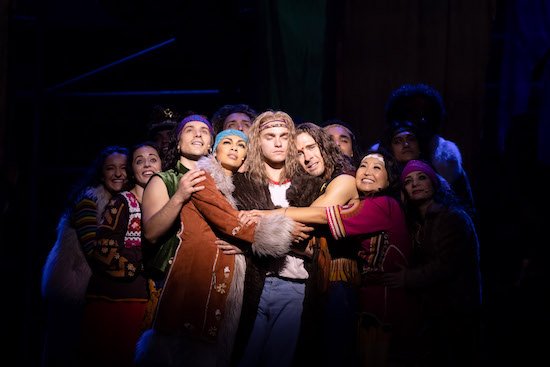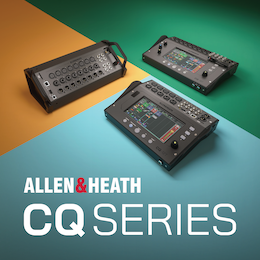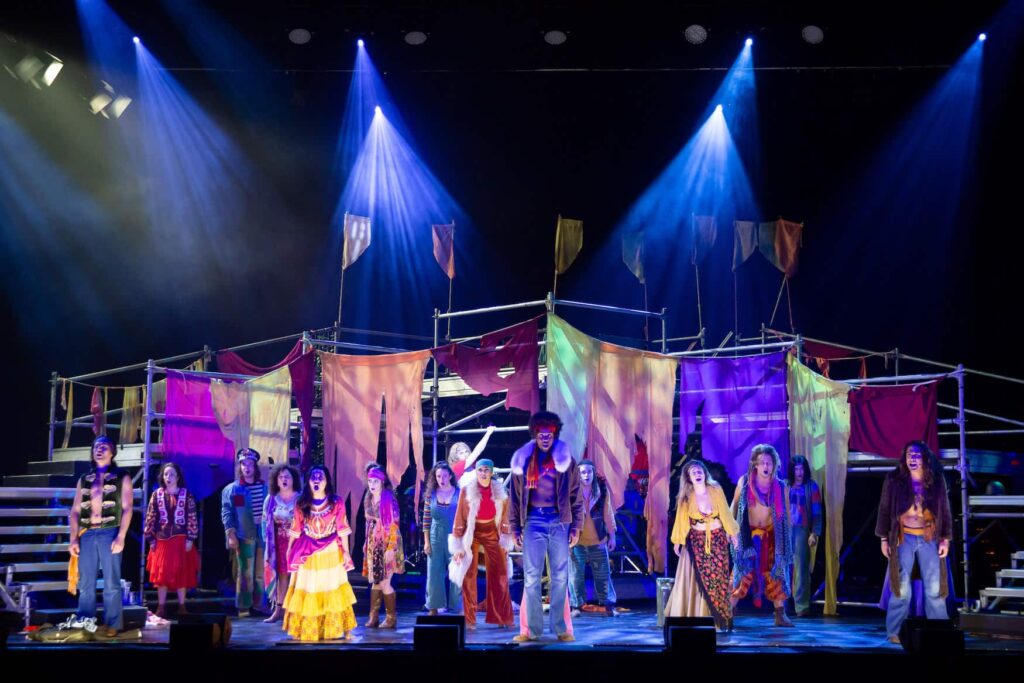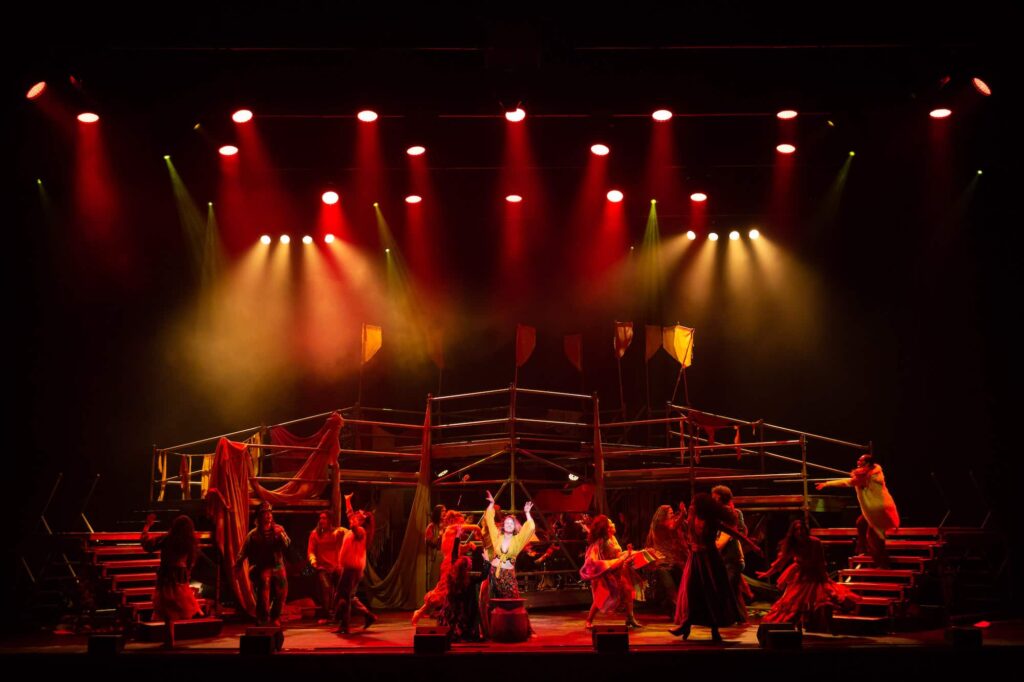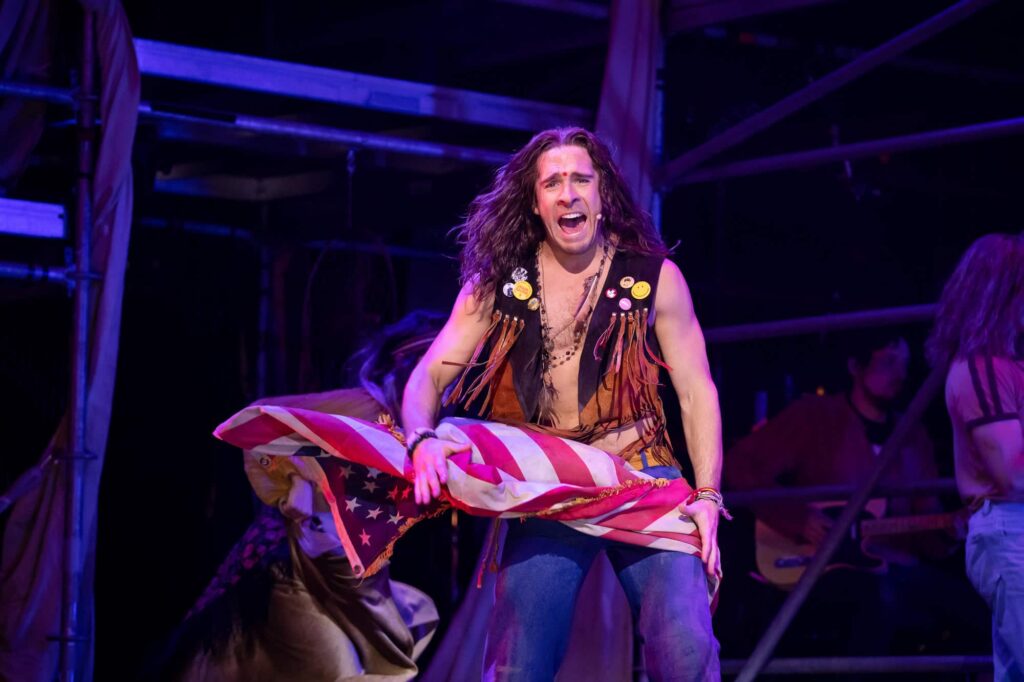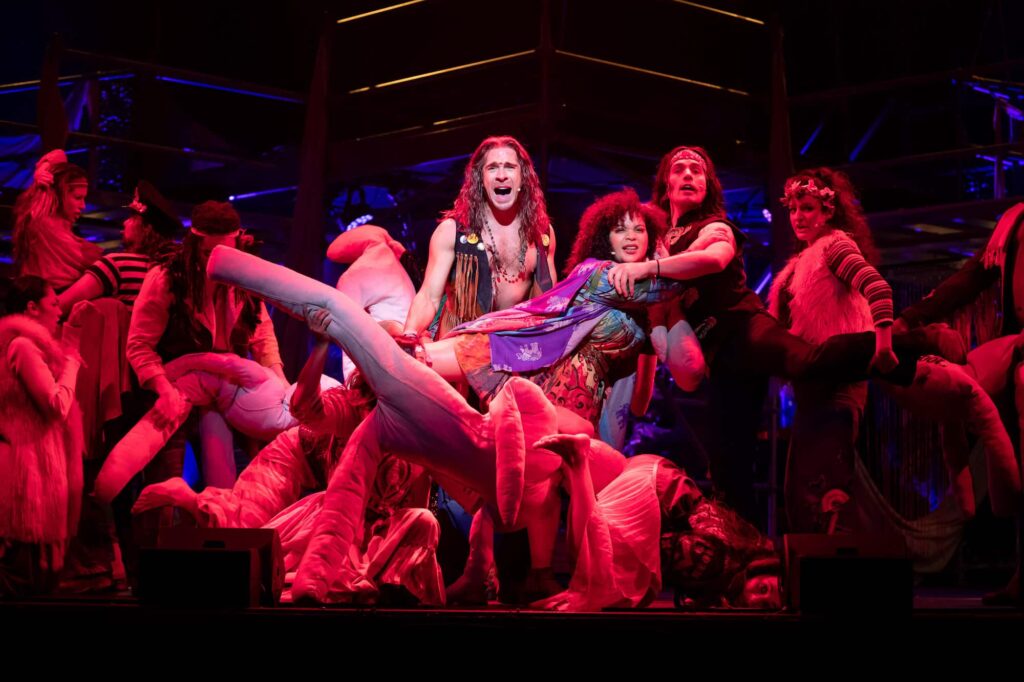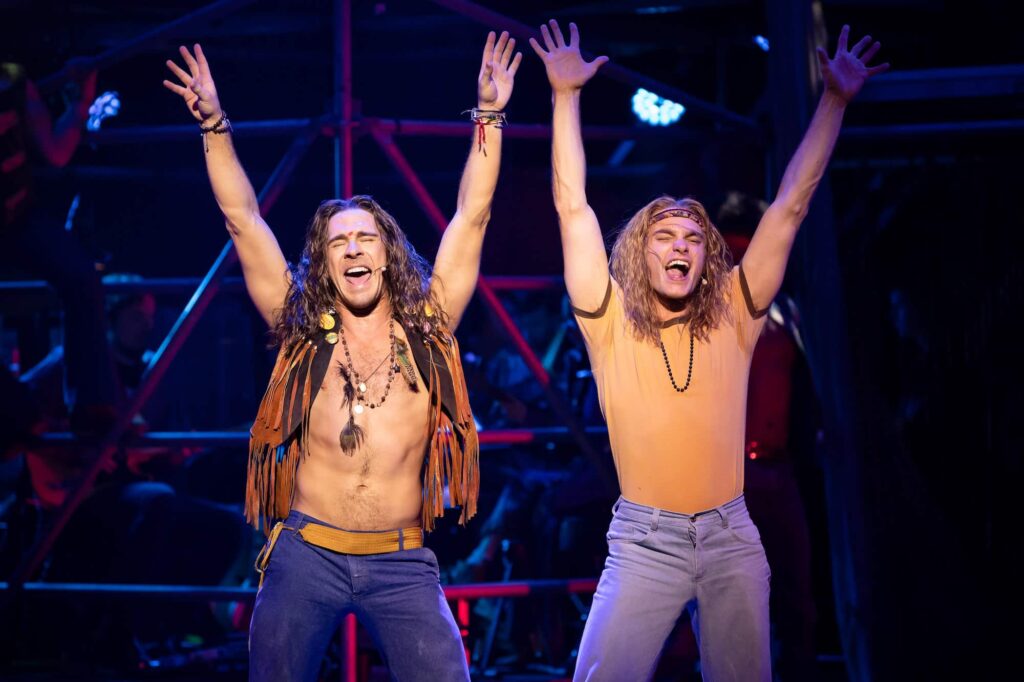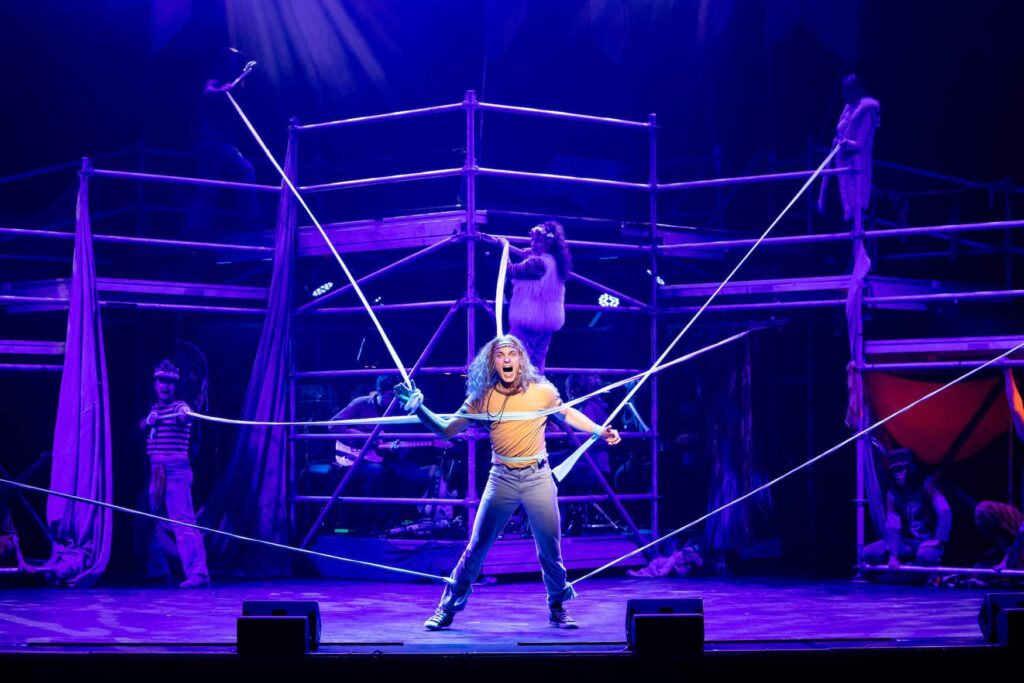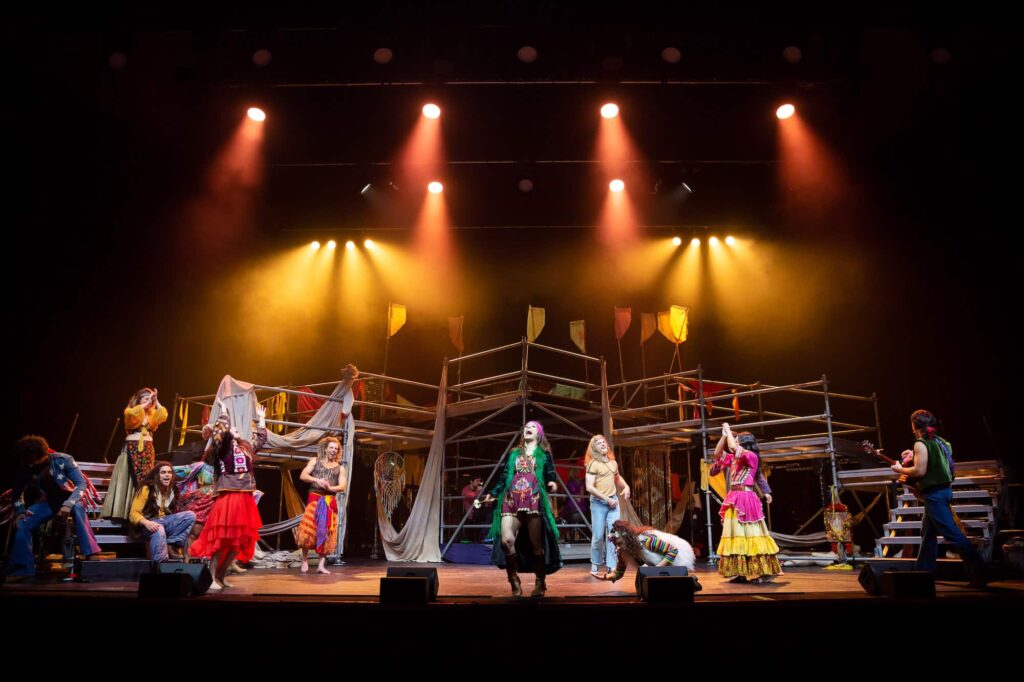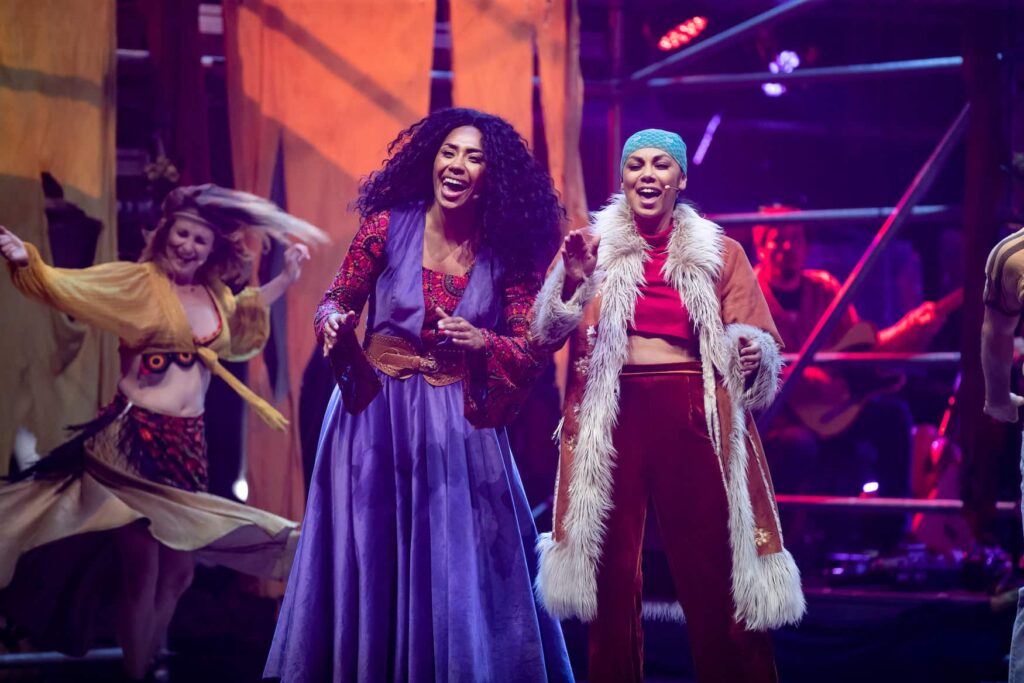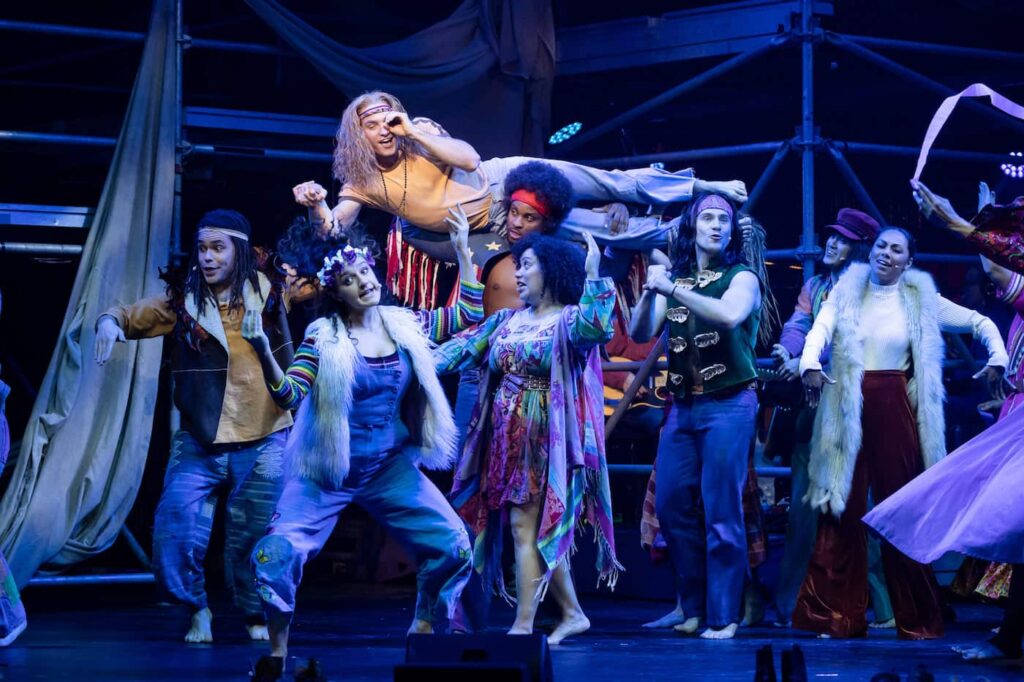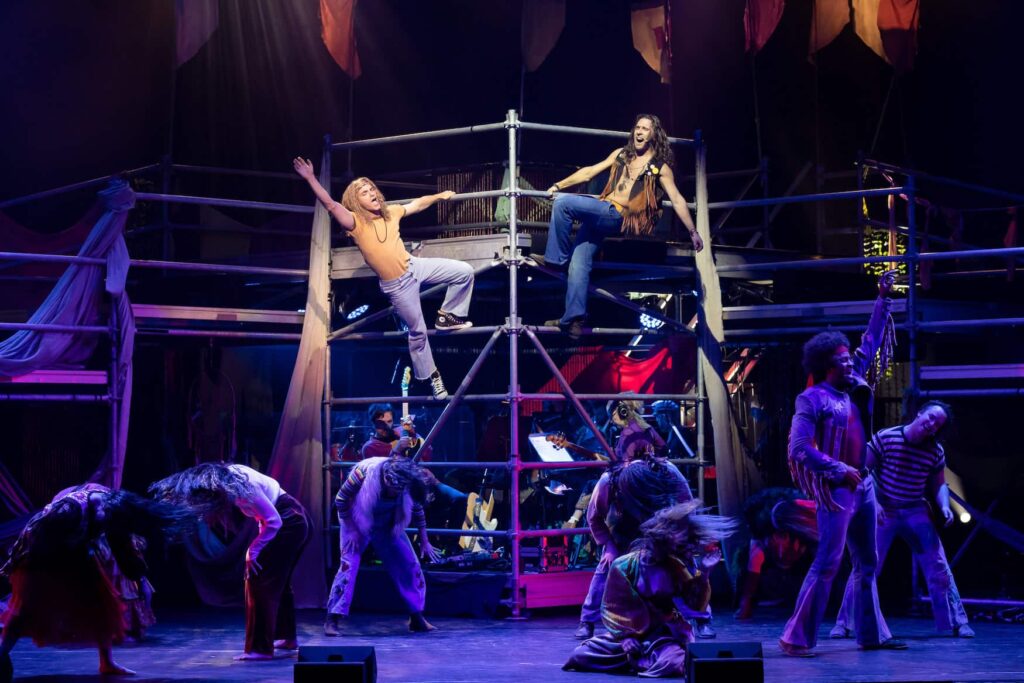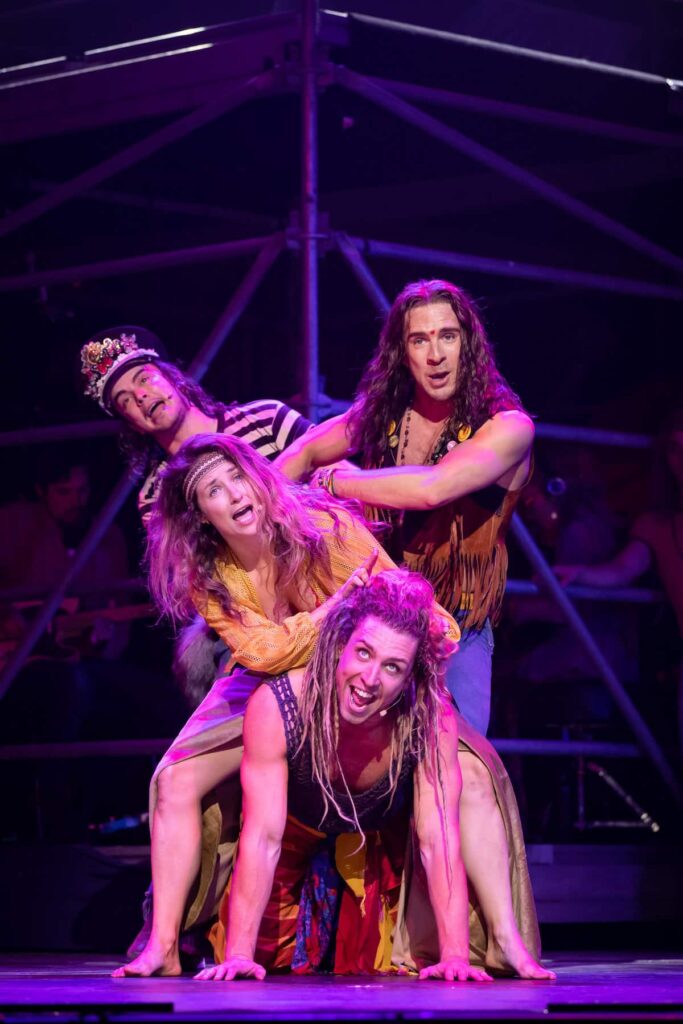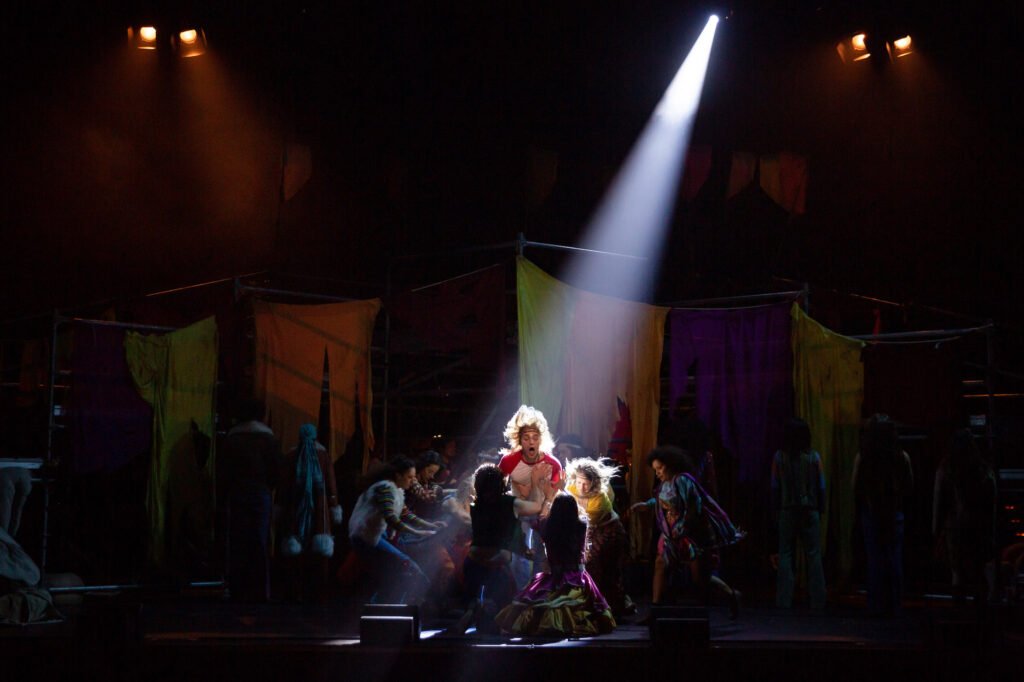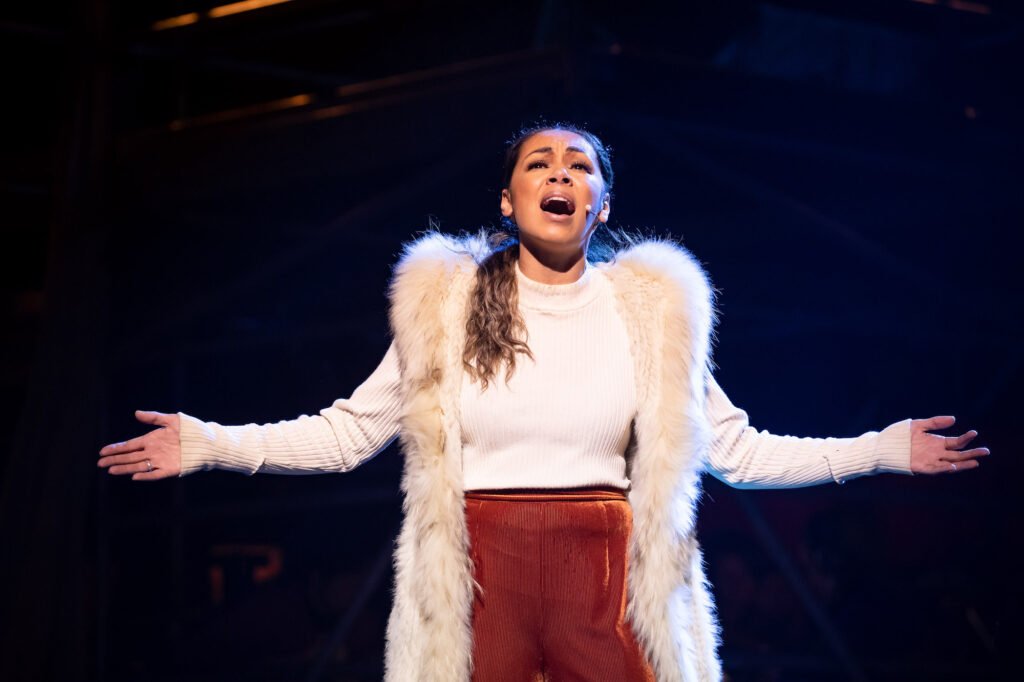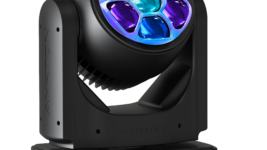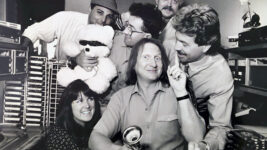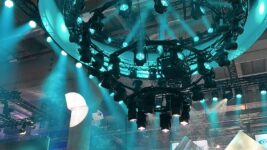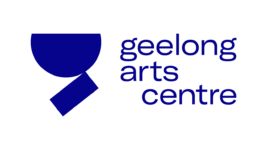Subscribe to CX E-News
THEATRE
by Cat Strom.
Photo Credits: Daniel Boud
Hair, the show that revolutionised music theatre, is back, celebrating 50 years since its Australian debut.
Australian audiences were first introduced to the American musical Hair at the Metro Theatre, Sydney in June 1969. Billed as ‘The American Tribal Love-Rock Musical’ the production was ground-breaking in its modern performance style, as well as its themes of race, drugs, sexual freedom, and anti-Vietnam War protest.
Staged here during Australia’s involvement in the Vietnam War, Hair reflected the atmosphere of questioning and rebellion felt by many of the younger generation. After playing for almost two years in Sydney, the musical transferred to Melbourne’s Metro Theatre in 1971 and then toured other Australian capital cities from 1972 to 1973.
Fast forward 50 years and it still packs a disorientating punch with its loosely structured medley of rock songs, minimal dialogue, and subversive politics. And then there is the wild celebration of hippie culture with onstage nudity, profanity and substance abuse.
The David M. Hawkins’ Australian revival of Hair is directed by Cameron Menzies with the production team given only a three week rehearsal period. “I had preliminary discussions with Cam about the show and some of the looks, but ultimately there wasn’t enough time to work through a lot of ideas,” said lighting designer Paul Lim.
“There also wasn’t much time for me to plot such a complex show for the initial season in Perth. The upside of a short rehearsal time is everyone is busy, so I’m kind of left to get on with it!”
Paul Lim is a director of Additive, the Melbourne-based lighting design and technical production house. They have a previs suite with L8 (formerly LightConverse) for 3D visualisation and grandMA2 onPC setup, so much of Paul’s pre-programming work was done there prior to arriving in Perth.
The previs was also invaluable for the Sydney Opera House run as the rig was markedly different from the rest of the tour.
“The Sydney show could not have happened without spending four days in the previs suite beforehand. Transferring the show to an almost entirely moving light rig in the previs made it possible to bump in in the limited time we had,” added Paul.
Adam Gardnir’s minimal set of scaffolding draped with colourful sheets is a constant throughout the show and whilst some may think it makes the lighting easier to do, the opposite can be true as sometimes the lighting designer is tasked with making the set look different from scene to scene.
“It’s the old adage of ‘we’ll fix it with lighting’,” commented Paul. “It seems to happen more and more these days as budgets shrink! Personally, I don’t mind it being the same set all the way through, it’s a good challenge.
“I have to ensure I build a number of possibilities into the rig. I felt that I got a good variety of looks out of the set.”
One of Paul’s main challenges was creating a design that would transfer well between venues, as well as allow him to create interest within the actual main performance area in front of the set piece which is quite small.
“It was challenging to create variety within that area without it looking too much the same,” he said.
“As the set structure doesn’t change and because there is so much scaffolding in it, it was important to light the structure itself as it’s the only backdrop I have. Consequently there’s a lot of set electrics and lights that solely point at the scaffold.
“It was important to sculpt it as you would a backdrop so it created the mood and framed what was onstage.”
Underneath the scaffold set are six Selecon HUI 1 Cell Cyc that do most of the work giving depth to the set, and around the outside are a bunch of ETC Source VI PARs that shoot through the scaffold, some in open white to do a backlight on the scaffold itself and some in colour to create a different shape and hue.
Elation Six Bars are fixed to the structure for sidelight, with Paul commenting that they’re not too bulky and have a lot of punch. A bunch of LED PARs were used to light the band who were ensconced within the set structure.
Paul’s homage to rock’n’roll were four flown bars of four PAR64Ss each fanning out to backlight the scaffold. “The VNSPs were for the title track Hair, used as fingers of light for a classic rock’n’roll look,” he added.
At the SOH, Paul used the in-house inventory of Martin MAC fixtures, and two Claypaky Scenius Unicos at the rear of the audience areas for flat full stage animation effects.
“What was predominantly a conventional rig turned into a mostly moving light rig with MAC Quantum Washes overhead, 12 MAC Viper Performances, seven MAC Viper Profiles, 16 MAC Quantum Profiles, and two Clay Paky Scenius Unicos,” explained Paul.
“The general rig had been conventionals FOH, plus a standard of nine washes and ten spots over the stage with a warm and cool top wash of conventionals …. so the challenge was to be able to do that with just movers.”
Going into such a large venue, Paul was concerned with being able to achieve the desired haze levels but the two Martin 365 and two Unique hazers sat really nicely in the room.
Two Robert Juliat Cyrano followspots came with the venue and control was an MA Lighting grandMA2 light at the SOH (although they had toured an MA2 onPC) run by Reinhardt Van der Walt.
Audio System Designer and Sonic Designer Russell Goldsmith has worked with director Cameron Menzies on a number of different projects. When Cameron expressed a desire to do some creative and interesting things with the sound design for Hair, Russell was excited to take on the project.
The decision was made to add soundscapes to the show in order to theatrically heighten some scenes, making the production more than just a rock show.
“We were trying to harken back to the Vietnam protest era of the Sixties, and at the same time give the audience a sense of the terror and magnitude of war, so we peppered the show with realistic war soundscapes,” explained Russell.
“We combine that with protest soundscapes, particularly for the pre-show section where we bombard the entering audience with it as well as music of the era. It’s quite a cacophony of Sixties culture and war.”
The show utilised in-house PA systems on the tour, including L-Acoustics, d&b audiotechnik, and Meyer Sound systems, so Russell had to design a system that was uniform and also repeatable. The control and RF system for the tour was supplied by Eighth Day Sound.
“It was quite a challenge but we managed to make each show sound as good as possible,” commented Russell. “A lot of the time these venues have the PAs rigged and optimised for their room and they spend a lot of time in the years before I even turn up working with those systems. So really, the technical challenge is offset by the local knowledge.”
A QLab playback system manages the sound playback and some venues required extra sound surround speakers for this playback only, particularly at the Sydney Opera House where the interior architecture of the Concert Hall does not facilitate the addition of speakers in the auditorium.
“We had to find a creative solution to install a rear surround position to make full use of the full acoustic architecture of the space,” explained Russell.
“I like to envelop the audience in playback content with the performance happening on one plane in front of their eyes and the other 270° field used for playback where it doesn’t clash with the FOH mix. However it mustn’t be too distracting or pull the ear away from the main show onstage.”
Fortunately Paul Lim had positioned a box truss out front for some of his Martin MAC Vipers and Russell was able to add four Meyer Sound UPAs suspended from scaff pipe across the three metre LX box truss.
“Those rear positions for the back half of the house made use of the immense acoustic space that the Concert Hall presents and so I was actually bouncing sound off the ceiling, letting it propagate in the space rather than hit the audience directly,” clarified Russell.
The show is mixed on a Yamaha CL5 with a couple of their Rio racks distributed through the venue in order to do inputs and outputs in different places. Russell remarked that the CL5 was attached to the project before he was! “It’s not necessarily my first choice of console but it’s certainly doing the task we need it to do,” he added.
“Anthony Lorenz operated at the Sydney Opera House, and he has come to grips with the console, really maximising its features. We are squeezing every last output from the console; it’s a large cast of sixteen plus a band of ten.”
Effects used were standard room reverbs tailored to whatever space they are in, with Russell remarking that they played in some pretty dry proscenium arch theatres to concert halls like the SOH.
“At the SOH we found the reverbs on the band and the vocals needed to allow for the natural reverb that occurs in the space and embrace it,” he said.
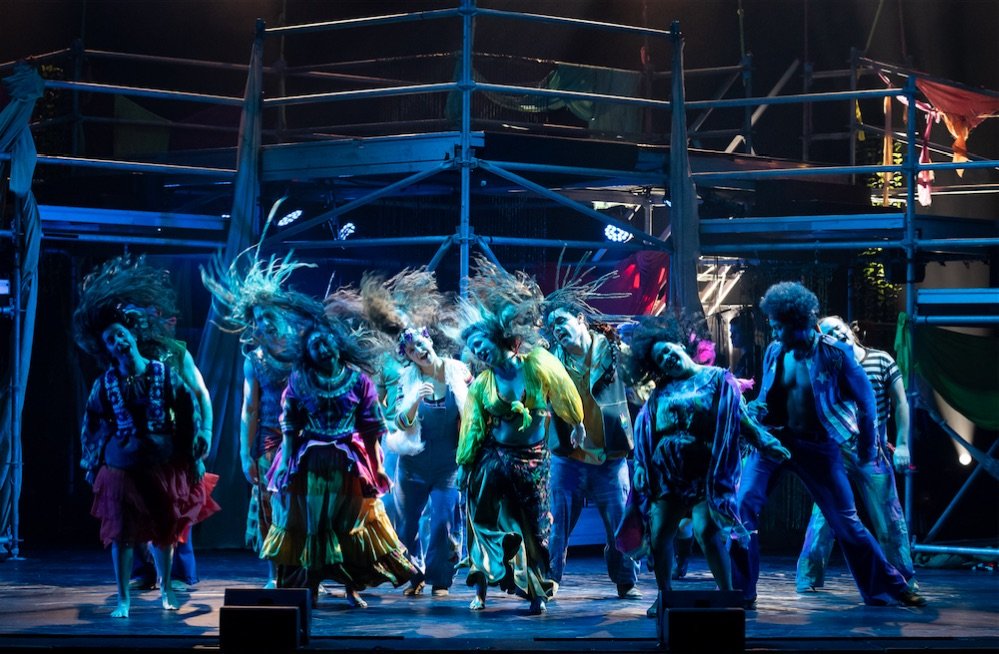
There is one scene in the show that is part of a drug-addled trip where five characters are inside a helicopter about to skydive, so Russell duplicated the input channel to the five performers and rather than routing it directly to the FOH through the normal FOH buss, it all ran through an amp simulation plugin on the console.
The result successfully emulates the sound of a voice through an old fashioned headset in a helicopter. Russell commented that it’s a busy mix with many open mics onstage as the ‘tribe’ are mostly all onstage at the same time.
The impact of the show relies on having a rock band feel with the theatrical vocals over the top of it using radio mics. The mics were mostly DPA d:fine 4066 omnidirectional mics with some d:fine 4088 used on the performers who sounded better with that model. The band mics are a fairly standard rock set up of Sennheiser and Shure models.
All of the band use Sennheiser IEMs which they essentially mix themselves as they have their own foldback mixes which they control via a Yamaha mix app on their phone.
Vintage Hair – about the 1969 production here also from CX Nov 2019 www.cxnetwork.com.au/vintage-hair

CX Magazine – Nov 2019 Entertainment technology news and issues for Australia and New Zealand – in print and free online www.cxnetwork.com.au
© CX Media
Subscribe
Published monthly since 1991, our famous AV industry magazine is free for download or pay for print. Subscribers also receive CX News, our free weekly email with the latest industry news and jobs.


